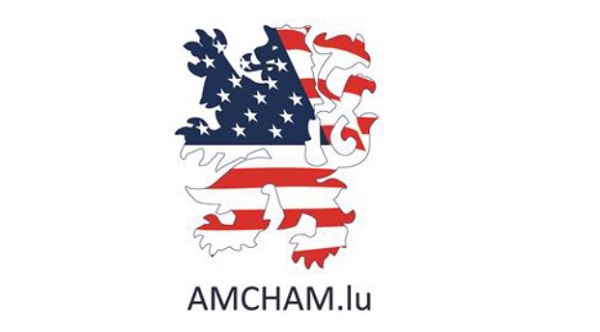 Projected high-speed train journey times across europe;
Credit: European Commission
Projected high-speed train journey times across europe;
Credit: European Commission
On Wednesday 5 November 2025, the European Commission announced its plans to “accelerate the development of high-speed rail across the EU, offering passengers significantly reduced travel times” but it is unlikely Luxembourg will ever be an integral part of this transport system.
The Trans-European Transport Network (TEN-T) was formally proposed in the Maastricht Treaty in 1992 and was officially implemented and initiated in 1996. It is the European Union’s long-term plan to build an integrated network of railways, roads, inland waterways, ports and airports to improve cross-border mobility and strengthen the Single Market. It prioritises major corridors across Europe, with the aim of completing a core network by 2030 and a comprehensive network by 2050.
The recent announcement of offering new high-speed rail options across the EU is part of the current phase of the TEN-T and, as someone who has actively reduced their air travel in recent years due to concerns about my carbon footprint, this announcement came as exciting news. However, as a resident of Luxembourg and a regular user of its train network I knew immediately that this would be one European Commission initiative that is unlikely to benefit residents within Luxembourg’s borders. This is an opinion I hold for a number of reasons.
Luxembourg’s free transport system is a wonderful public service but it is not without its frustrations. Amongst these are the limitations of the rail system. In the south, this is, to a degree, being rectified with the introduction of new 7 km stretch of track to alleviate congestion on the existing Luxembourg City-Bettembourg line. Along with the addition of the high-speed tram line, which will connect Luxembourg-Gasperich and Esch-Belval, these solutions should reduce passenger congestion on two of the major southern and westerly commuter routes into and out of Luxembourg City. Unfortunately, similar solutions for the north and east are not in the pipeline.
Outside of the free transport system provided and maintained by Luxembourg's national railway company, CFL, high-speed rail is available in the south of Luxembourg via the TGV (Train à Grande Vitesse) which offers high-speed services from Luxembourg-Gare directly to Paris, Strasbourg, Lyon, Marseille and Montpellier. However, there is no high-speed train service which goes to the East or North of the Grand Duchy. The lack of a high-speed service to Brussels has been a bone of contention for decades, which is incredible given how many members of the European Council choose to regularly fly to Luxembourg instead of taking the train from Brussels despite the European Commission being committed to reducing pollution caused by air traffic through the adoption of services such as high-speed rail.
When it comes to the rail links to the east, despite improvements on both sides of the Luxembourg border, a day trip across the German border, even to somewhere as close as Trier, can often feel like a lottery, with services repeatedly cancelled, delayed or subject to the dreaded bus replacement service.
Internally, the reliability of the Luxembourg rail network has improved much over the years too but it is still plagued by problems due to maintenance issues, train malfunctions, weather and, surprisingly, regular trespassing by unauthorised people on the tracks.
Luxembourg’s rail network also seems to have an inordinate number of periods of maintenance works, which more often than not take place across holiday periods due to the reduced number of passengers on the network. Frustratingly, this means that a normally viable holiday transport option is continually hampered exactly when there are those wishing to use it to get away. The seemingly never-ending number of works across the country are also detrimental to building long-term passenger confidence in the rail network.
Improvements have been made with the introduction of new trains and the roll out of these should be completed by the end of 2025 but while they may improve comfort and reliability, they cannot solve the inherent issues within the county’s rail infrastructure.
The CFL’s long-term plan to improve track quality and reduce the number of level-crossings in use is commendable but there is a major aspect of the network they simply cannot fix without a huge level of investment: the single track lines of the north.
When a train travels north beyond Ettelbruck it will, at several points, travel along a single-track line which has to be shared by trains coming from both northerly and southerly directions. This impacts both the speed of the trains and the times at which they can operate on those section of track. These single tracks often run through tunnels which cannot be widened without a considerable level of work, the logistics of which would give engineers and passengers alike nightmares for a lengthy period.
One of these is the Luxembourg-Liege line, which offers an alternative route to Brussels, albeit with a connection in Liege. Should a high-speed rail link between Luxembourg-Gare and Brussels finally start to become a reality, it is likely that this route will become the proxy line while upgrades to the existing lines to Brussels are updated to accommodate high-speed trains. Yet, with its single track limitations, I can already foresee elevated levels of frustration from those who would have to use this route in the interim.
And this is why Luxembourg is unlikely to ever be an integral part of any Europe-wide high-speed rail network. Outside of any high-speed trains coming from France, there is little in the design and topography of the Luxembourg rail network which would allow a direct line from any major neighbouring European city without inflicting high levels of pain upon the network’s existing users for a considerable period of time.
Some suggest that the answer may lie in modularity, an approach repeated by consecutive Luxembourg governments. Modularity can work brilliantly but often it is too complex to be truly practical. The idea of hopping off of a train and onto a bus or tram to reach one’s destination is simple in theory but outside of the public transport networks within Luxembourg City it often falls apart under the weight of logistics, with delays and replacement services having a huge knock-on effect when undertaking a journey which features a connecting service.
Luxembourg’s Minister for Mobility and Public Works, Yuriko Backes, recently raised some eyebrows with her suggestion that in the future Luxembourg Airport will reach capacity and we need to start thinking about the potential for a second airport within the Grand Duchy. As implementing a second runway at Findel is regarded as non-viable, this leaves the more likely possibility of a new airport in the north of the country. Connecting travellers from that airport to the south of country will require a rail system which makes the location of the second airport in the north a truly viable option. Otherwise, it would only serve as a hub for people travelling to other European cities. Cities which can implement and benefit from high-speed rail. However, this would surely defeat the purpose of having an additional airport in north, with tourist money leaving the country at high-speed and not going towards paying off the considerable costs an additional airport would entail.
So, while high-speed rail may be a major part of the EU’s future transport network it is highly unlikely that the Grand Duchy will directly benefit from being connected to it because of the limited infrastructure which exists across much of the country today.
But there is possibly one solution. In the future, one could choose to take a flight between the existing airport in the south and the potential airport in the north. A route that would be so short that Luxair would not even have time to pop open the complimentary crémant for those onboard. Now that is high-speed transport.








